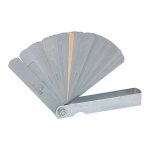Hi everyone, i have always used the flaslight method, confirming later using house walls at a distance to make sure the reticles of the scopes of my hunting rifles were mounted straight to gravity.
Now i moved to a new house and i can place a plumb line 20 yards away when mounting the scope. I read on forums that a 100 yards plumb line is better. Why is that? As long as i can focus the rope at 20 yards (my NF has parallax adjustments), shouldn't the process be as accurate as hanging the rope at 100 yards?
Am i missing something?
Thanks!
Now i moved to a new house and i can place a plumb line 20 yards away when mounting the scope. I read on forums that a 100 yards plumb line is better. Why is that? As long as i can focus the rope at 20 yards (my NF has parallax adjustments), shouldn't the process be as accurate as hanging the rope at 100 yards?
Am i missing something?
Thanks!



